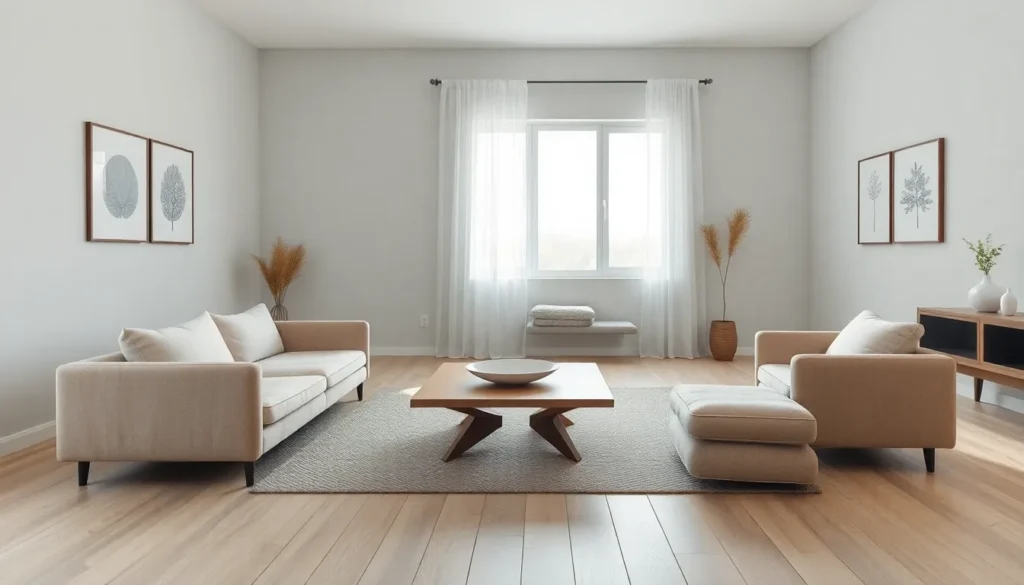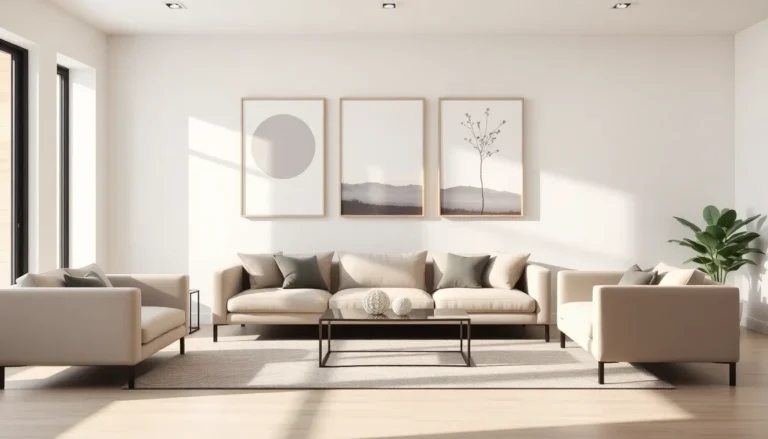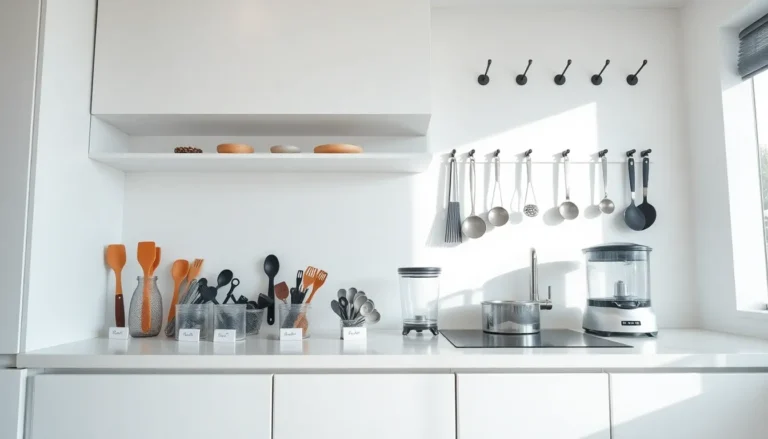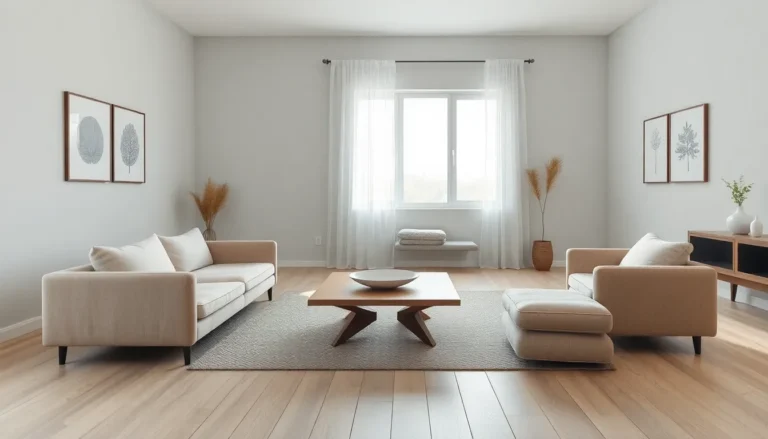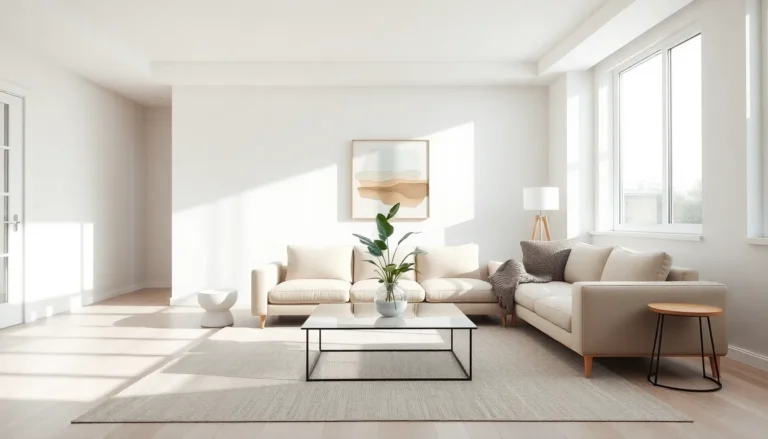Imagine stepping into a living room that radiates calm and order, a space where every item serves a purpose, and there’s no excess baggage in your interior décor. Welcome to the world of minimalist interior design. Not only does it make your room look sleek, but it also grants you peace of mind. Who wouldn’t want that? Today, we’re diving into how to create a minimalist living room that is as functional as it is fabulous: so prepare to reclaim your space from clutter, one stylish decision at a time.
Table of Contents
ToggleUnderstanding Minimalist Interior Design
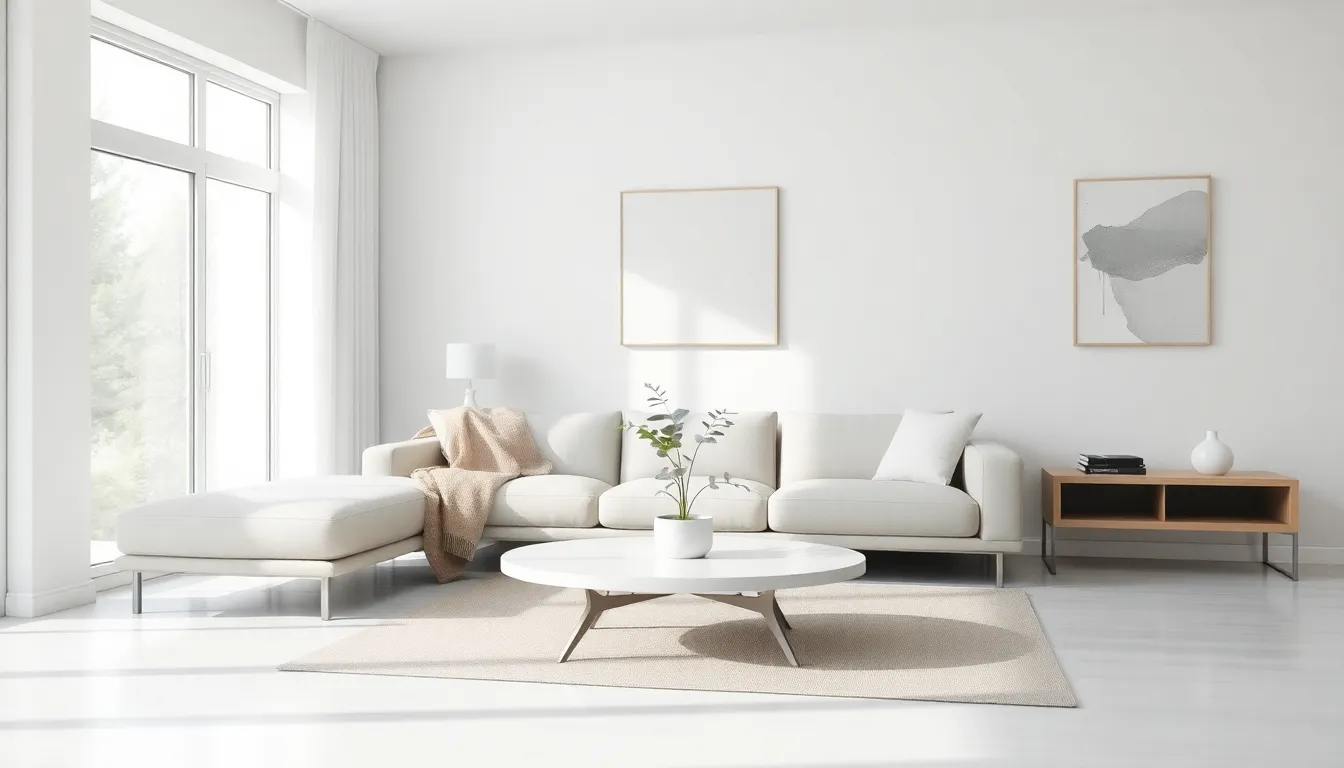
Minimalist interior design isn’t just about having fewer items: it’s a philosophy that emphasizes simplicity and functionality. This aesthetic encourages individuals to embrace the ‘less is more’ mantra, eliminating distractions to create a serene environment. Beyond mere decor, it affects one’s lifestyle, leading to mindful consumption and intentional living. So, every piece chosen holds significance, and each color palette conveys tranquility, making the living room a sanctuary.
Key Principles of Minimalist Design
Designing a minimalist living room requires understanding its core principles. Here’s a breakdown of essential elements that can bring your vision to life.
Essential Elements for a Minimalist Living Room
Starting with the basics, a minimalist living room often centers around a few chosen pieces that embody style and function. Think of a single, impactful coffee table or an elegant sofa that both invites relaxation and serves as a conversation starter.
Color Palette and Materials
Colors in minimalism lean toward soft, neutral tones. Shades like beige, soft whites, and pale grays create a canvas that promotes lightness without overwhelming the senses. Selecting materials like natural wood or stone enhances the tactile experience, grounding your room in nature.
Furniture Selection and Layout
When it comes to furniture, opting for multifunctional pieces can save space and enhance usability. A couch with hidden storage or a coffee table that converts to a dining table checks all the boxes. The layout should promote flow: spaces should be open, allowing for effortless movement.
Incorporating Functional Decor
Decor doesn’t have to be sacrificed in a minimalist design: it should merely serve a purpose. Stylish baskets can store blankets while adding a visual interest. Wall art, when chosen thoughtfully, can elevate the room without overwhelming it. Each of these elements contributes to both form and function.
Creating a Calm Atmosphere
Achieving a zen-like environment in a minimalist living room is all about creating the right atmosphere.
Lighting Solutions for Minimalist Living Rooms
Natural light should be the star of any minimalist space. Using sheer curtains or strategically placing mirrors can enhance sunlight flow. Plus, incorporating dimmable lighting allows for adaptability. Adjust the brightness to suit the mood or time of day.
Natural vs. Artificial Lighting
While achieving balance is vital, striving for a harmony between natural and artificial lighting is equally important. Combining ambient lighting with well-placed accent lights can help set the tone, transforming the room from bright and airy to cozy and intimate.
Tips for Accessorizing Without Clutter
Accessorizing in a minimalist living room is a balancing act between beauty and utility.
Balancing Functionality with Aesthetics
Items should not just sit pretty: they should have a purpose. For instance, a decorative bowl can serve as a catch-all for keys while looking chic. By ensuring that every accessory serves a dual purpose, it’s possible to keep the clutter at bay.
Strategic Use of Space
Maximizing the effective use of space is one of the hallmarks of minimalist design. Consider defining distinct areas for different functions. Perhaps a cozy reading nook can share its space with a home office corner. The idea is to create versatile spaces that cater to multiple needs without compromising aesthetics.
Sustainability in Minimalist Design
Minimalism and sustainability go hand in hand as both promote thoughtful living. Opting for sustainable materials, like reclaimed wood or eco-friendly textiles, not only reduces environmental impact but also aligns with the minimalist philosophy of conscious consumption. Also, investing in quality over quantity ensures that pieces last longer, thereby minimizing waste.

